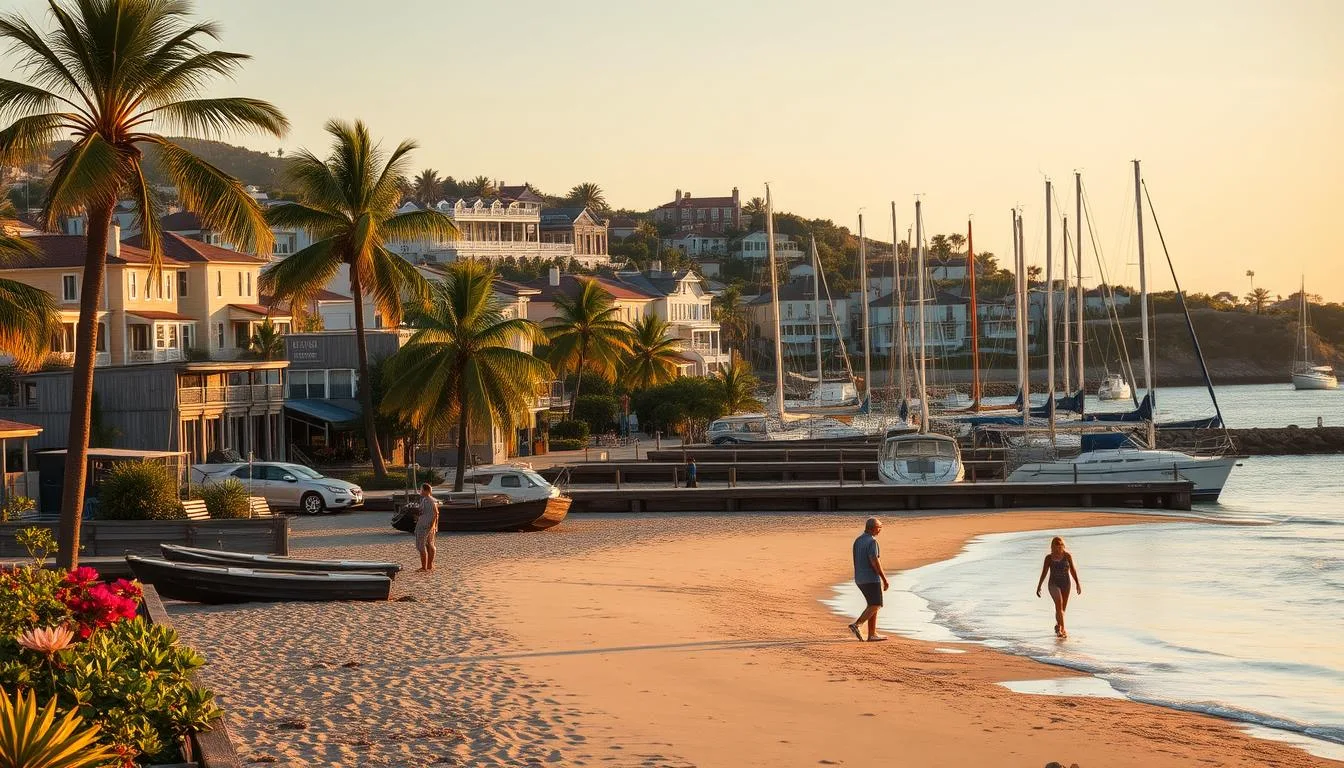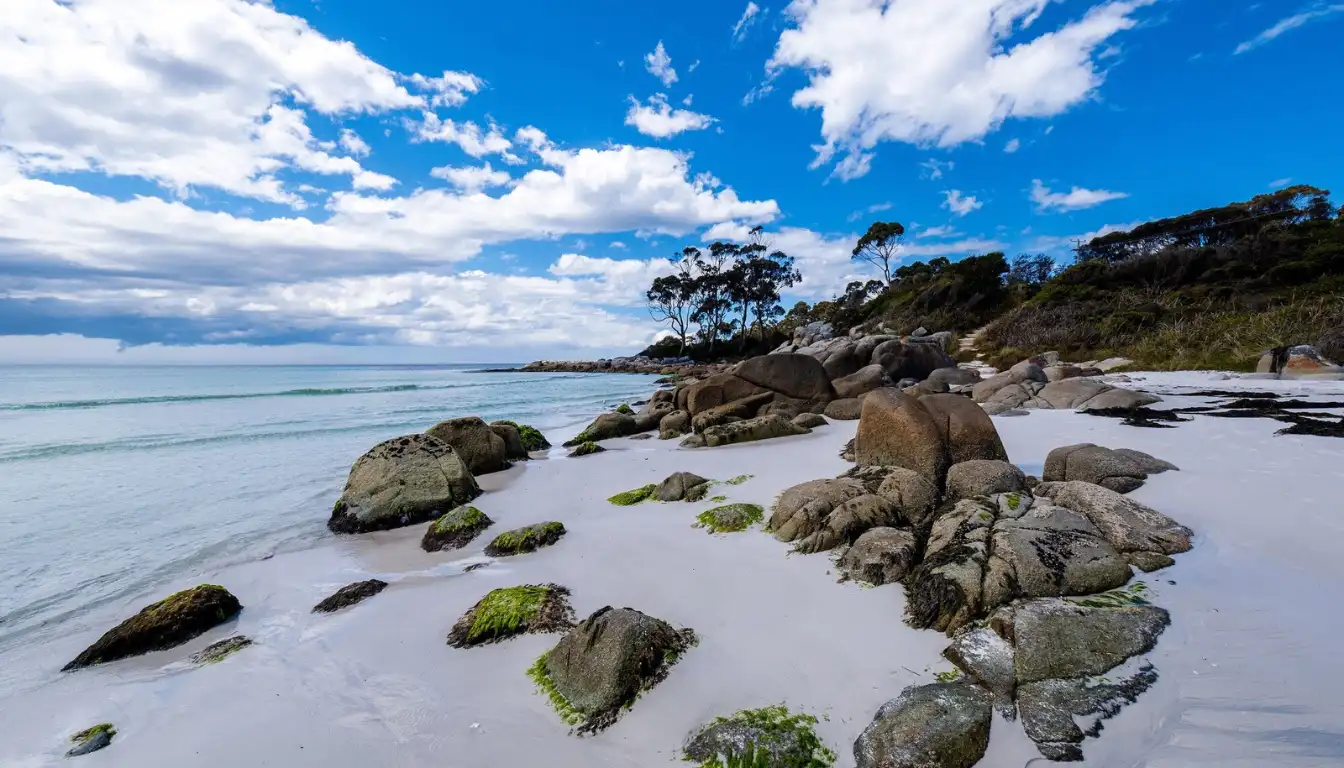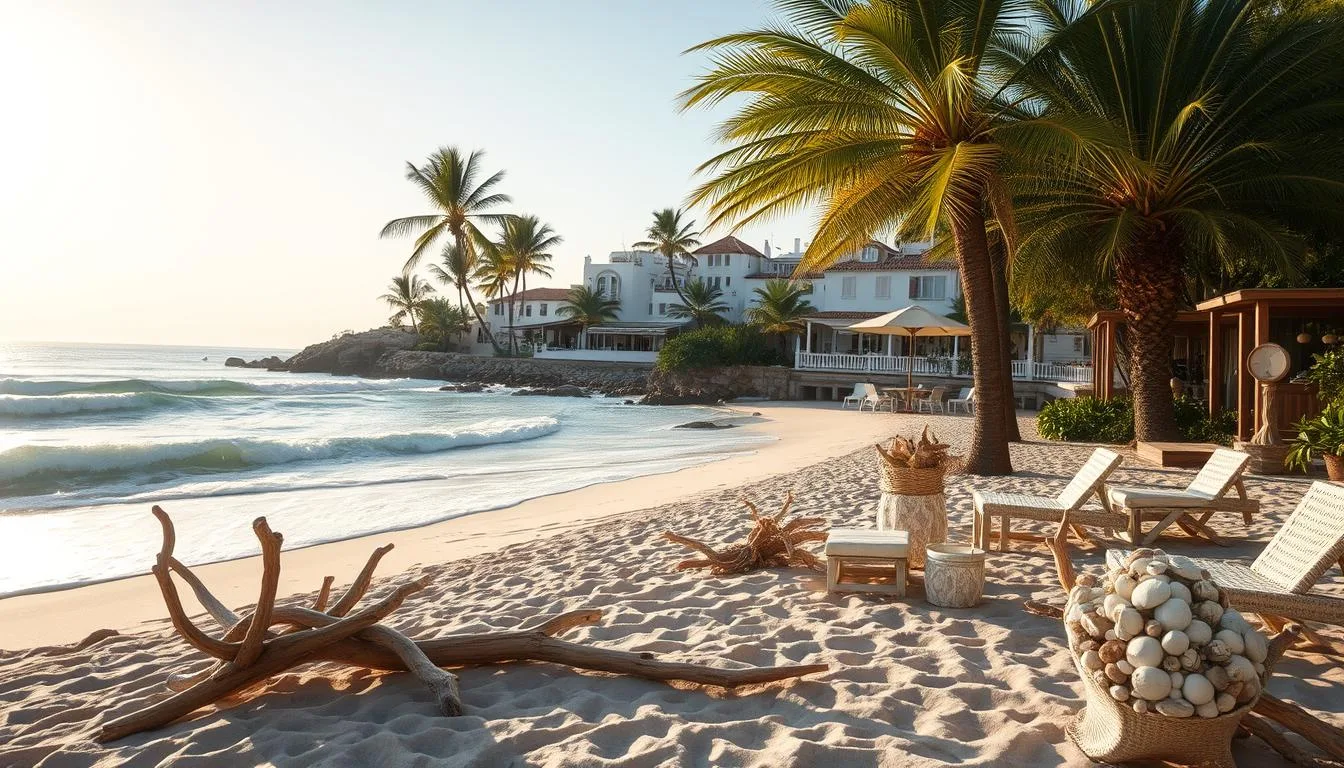
Spaces that whisper the ocean’s language have always captivated me. Growing up near California’s coast, the sea aesthetic became my link to tranquility. It breathes with a lighter spirit than structured urban designs.
Sea aesthetics turn living spaces into serene coastal retreats. They capture the calming rhythms of waves and soft textures of sand. This style creates an open feeling reminiscent of vast coastal landscapes.
Coastal decor surpasses simple nautical themes. It’s a sophisticated approach to interior design. Natural materials, soft colors, and openness transform rooms into peaceful seaside sanctuaries.
The sea aesthetic works anywhere, from urban apartments to suburban homes. It brings relaxed elegance to any space. This guide will help you create a sophisticated, calm beach vibe.
Understanding the Sea Aesthetic Foundations
Coastal design blends manhattan style with urban chic. It creates spaces that exude tranquility and sophistication. This approach captures an emotional landscape connected to nature’s serene elements.
Coastal design principles are rooted in our connection to water and open spaces. They trigger a sense of calm and expansiveness. This aesthetic achieves what urban chic design often struggles to create.
The Psychology of Coastal Design
Coastal design taps into powerful psychological triggers:
- Creates a sense of openness and freedom
- Reduces stress through natural color palettes
- Promotes relaxation through organic textures
- Connects interior spaces with external environments
Elements of Beach-Inspired Spaces
Key elements that define sea aesthetic include:
- Abundant natural light
- Soft, muted color schemes
- Organic, textural materials
- Ocean-inspired accent pieces
Color Theory in Coastal Decor
Manhattan style influences coastal color selections. Soft blues, crisp whites, and neutral beiges create a sophisticated palette. These colors work together to evoke peaceful seaside environments.
Coastal design is not about replicating a beach house, but capturing the essence of tranquility and natural beauty.
Creating Your Beach Color Palette
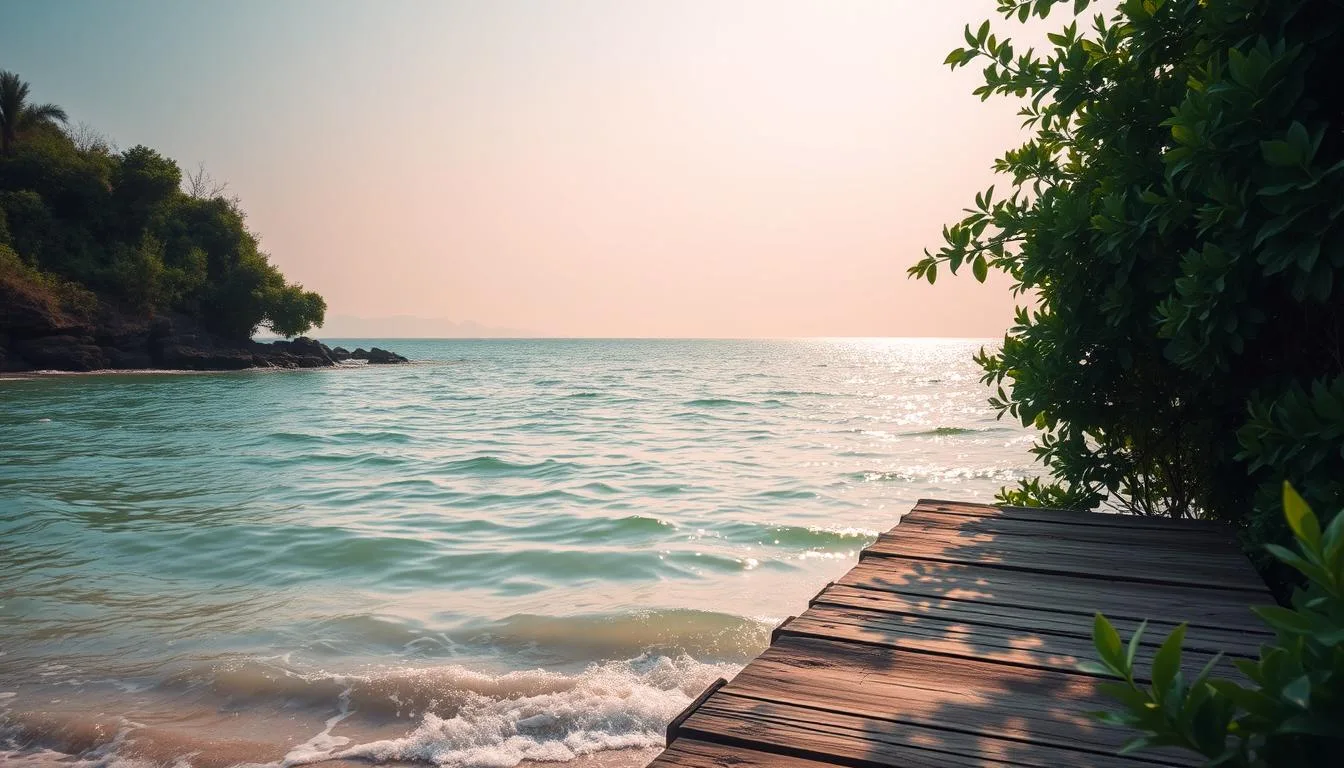
A beach-inspired color palette can turn your space into a calm coastal haven. It blends big apple fashion with seaside charm. Let’s explore how to pick colors that capture the essence of coastal living.
For a balanced coastal look, designers suggest this color mix:
- 70% light blues and neutral tones
- 20% greens and natural hues
- 10% vibrant accent colors
The key is balancing soft ocean shades with pops of vibrant hues. Sandy beiges and marine blues pair well with coral or navy accents.
This approach combines big city style with relaxed beach vibes. It creates a unique and inviting atmosphere in your space.
Color is the soul of your coastal design, telling a story of tranquility and natural beauty.
Choose colors that mirror seaside elements. Seashell whites, ocean blues, and driftwood grays form an elegant yet relaxed base.
Layer these colors to add depth to your design. This technique creates visual interest and a sense of dimension.
Your goal is to craft a space that feels like a peaceful beach getaway. It should blend design principles with nature’s inspiration seamlessly.
Natural Materials and Textures
Coastal design celebrates nature’s raw beauty. Organic materials can transform a room, creating an authentic seaside connection. This approach blends city sophistication with beach-inspired elements.
Natural textures infuse metropolitan spaces with coastal charm. Choose materials that evoke the essence of beach living.
Incorporating Driftwood and Seashells
Driftwood and seashells tell stories of coastal landscapes. They’re more than just decorative items.
- Create wall art using carefully arranged driftwood pieces
- Display seashells in glass containers or as decorative accents
- Use driftwood as unique furniture or shelving supports
Woven Elements and Natural Fibers
Texture is key in coastal design. Rattan, jute, and sisal add depth and warmth to any space.
- Select furniture with woven backs or seats
- Use natural fiber rugs to anchor rooms
- Incorporate woven baskets for storage and decoration
Stone and Sand-Inspired Textures
Stone and sand-like textures elevate coastal design. They add refinement to beach-themed spaces.
- Limestone or marble surfaces
- Sand-colored textured wall treatments
- Smooth river stones as decorative elements
Lighting for Coastal Ambiance
Crafting a sea aesthetic requires a balanced approach to lighting. My design philosophy blends uptown sophistication with downtown edge. It maintains a coastal essence through natural and artificial light sources.
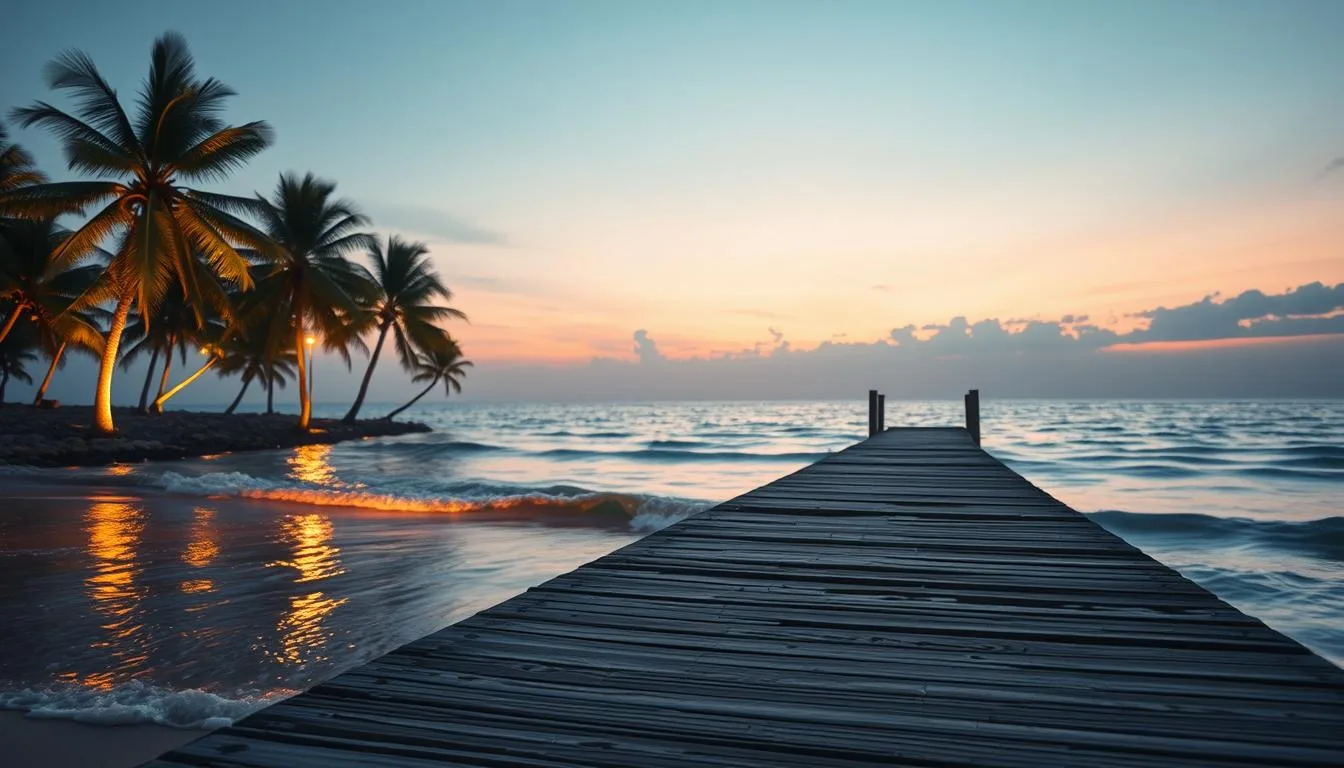
Natural light is the cornerstone of coastal design. To maximize sunlight, consider these tips:
- Keeping windows unobstructed
- Installing large glass doors
- Adding strategically placed mirrors to reflect light
- Considering skylights for additional brightness
Artificial lighting shapes the perfect coastal atmosphere. Explore unique options that capture the sea’s spirit:
- Rope-wrapped table lamps
- Shell-inspired chandeliers
- Soft, diffused pendant lights
- Dimmable accent lighting
Layering light sources creates depth and warmth. Coastal design favors a soft, organic approach over dramatic fixtures.
Mix ambient, task, and accent lighting for a sun-kissed environment. This technique generates a serene space that feels elegant and relaxed.
Lighting is the silent storyteller of your coastal sanctuary.
Careful selection of lighting elements can transform any space. Create a stunning coastal retreat that balances edge with natural tranquility.
Furniture and Layout Considerations
Thoughtful furniture selection and strategic space planning are key to a perfect sea aesthetic. Create an inviting, relaxed environment that captures the spirit of beach living. Focus on comfort and style that reflects the natural beauty of ocean-inspired spaces.
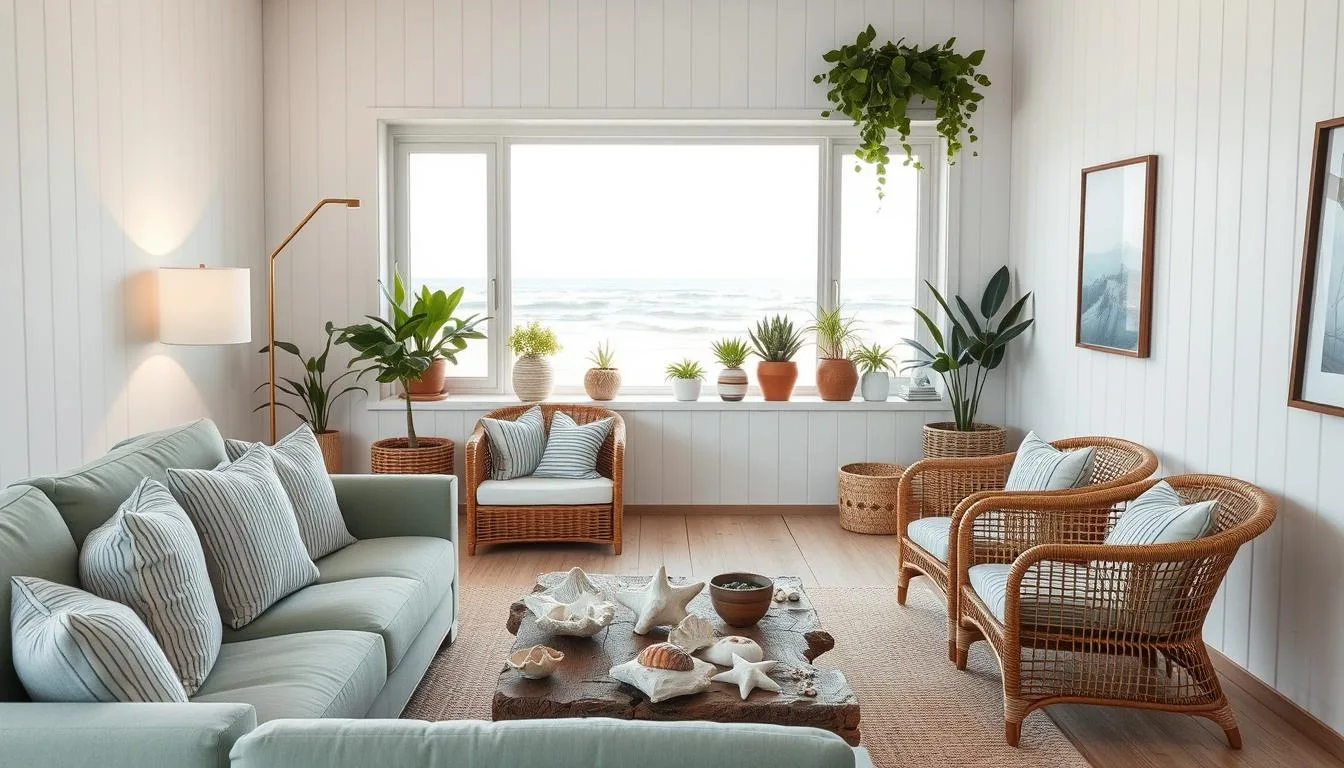
Selecting Beach-Inspired Furniture
Choose furniture that embodies coastal charm. Look for light wooden frames with weathered finishes. Opt for comfortable, casual seating with soft, relaxed lines.
- Light wooden frames with weathered finishes
- Comfortable, casual seating with soft, relaxed lines
- Furniture that mimics the organic shapes found in coastal landscapes
“Great coastal design tells a story of relaxation and natural beauty.” – Interior Design Expert
Space Planning for Ocean Views
Strategic space planning is crucial in a New York aesthetic with coastal influences. Arrange furniture to maximize natural light. Create an open, airy atmosphere that connects interior spaces with external views.
Indoor-Outdoor Flow
Blending indoor and outdoor spaces is essential in sea aesthetic design. Use sliding glass doors to create seamless transitions. Select furniture that works both inside and outside.
- Use sliding glass doors to create seamless transitions
- Select furniture that works both inside and outside
- Choose a consistent color palette across spaces
Pro tip: Lightweight, versatile furniture allows for easy rearrangement, capturing the free-spirited essence of coastal living.
Coastal Accessories and Artwork
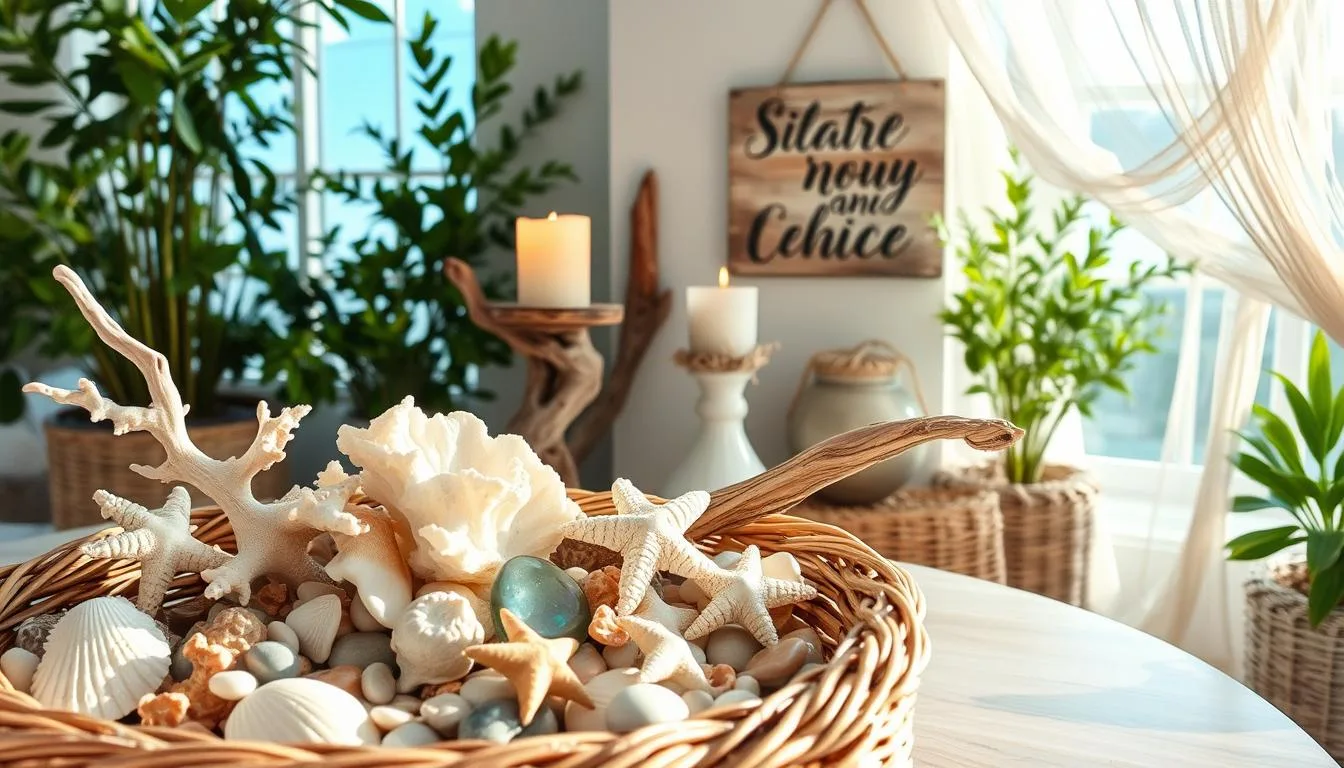
Coastal accessories blend manhattan style with urban chic elements. Choose pieces that tell a story and create visual interest. Avoid overwhelming the room with too many items.
Key accessories for creating a sea aesthetic include:
- Ginger jars with oceanic blue glazes
- Coral sculptures that capture natural marine textures
- Nautical-inspired decorative objects
- Chinoiserie pieces with subtle coastal references
For artwork, focus on pieces that evoke tranquility. Coastal photography, abstract seascapes, and marine-inspired prints can enhance your urban chic design. Select meaningful pieces that create a narrative.
The art of coastal accessorizing is about creating moments of visual poetry that connect your space to the serene beauty of the ocean.
Strategic placement is crucial for coastal accessories. Group smaller items in thoughtful vignettes, using varying heights and textures. This approach creates depth in your space.
Display collections of seashells, driftwood, or vintage nautical instruments. These items add authentic coastal character to your room.
Sea Aesthetic Through Textiles
Textiles transform spaces into coastal retreats. I’ve found key strategies for selecting fabrics that capture seaside living. These methods blend big apple fashion with coastal charm.
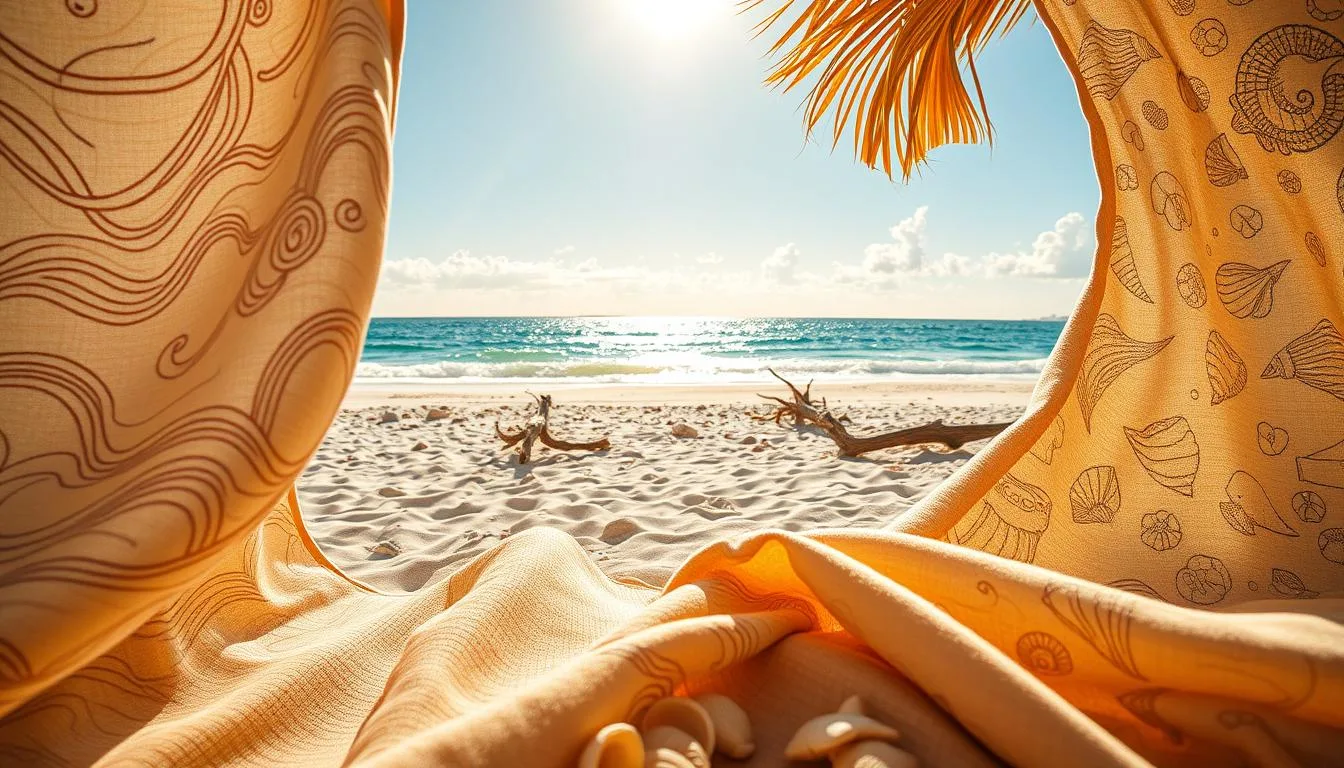
The right textiles can transport you to a serene beach setting. They create a relaxed yet sophisticated environment. Careful fabric choices bring the coastal atmosphere home.
Natural Fiber Fabrics
Natural fibers echo the coastal landscape. I recommend these options:
- Linen: Lightweight and breathable
- Cotton: Soft and versatile
- Jute: Adds rustic texture
- Rattan: Introduces organic warmth
Pattern Selection
Patterns greatly influence the sea aesthetic. For a cosmopolitan touch, consider these choices:
- Subtle nautical stripes
- Soft ocean-inspired prints
- Delicate wave-like patterns
Layering Techniques
Textile layering transforms your space. Mix textures and weights to create depth:
- Start with a neutral base
- Add textured throws
- Incorporate decorative pillows
- Use lightweight curtains
The art of textile design lies in creating a harmonious blend of comfort and style.
Carefully select and combine textiles to craft a tranquil coastal space. This approach maintains a touch of big apple fashion sophistication.
Conclusion
Sea aesthetic transforms your living space into a peaceful retreat. It offers a refreshing alternative to city sophistication. Coastal design lets you create an environment of tranquility and natural beauty.
Coastal elements can be incorporated in any home. You can adapt them to your personal style. Each design choice adds to a serene atmosphere.
This style isn’t about strict rules. It’s about creating your personal sanctuary. Natural materials, soft lighting, and organic textures are key elements.
These features can turn any space into a coastal retreat. The goal is to design an environment that feels like an escape. It brings the relaxed essence of seaside living home.
Try experimenting with coastal design elements. Start small and trust your instincts. Let sea-inspired decor guide your creativity. Your perfect beach vibe awaits discovery.

